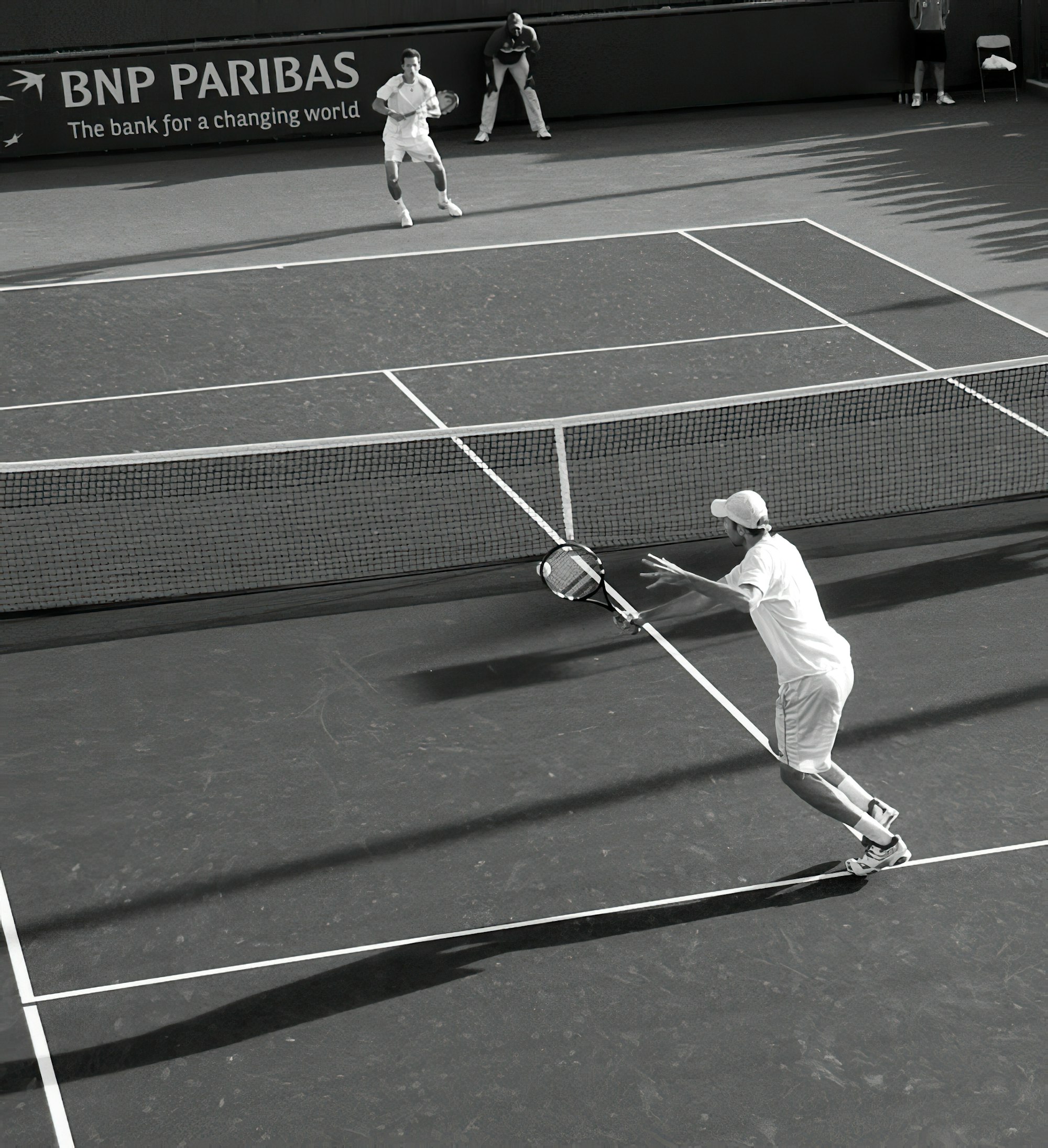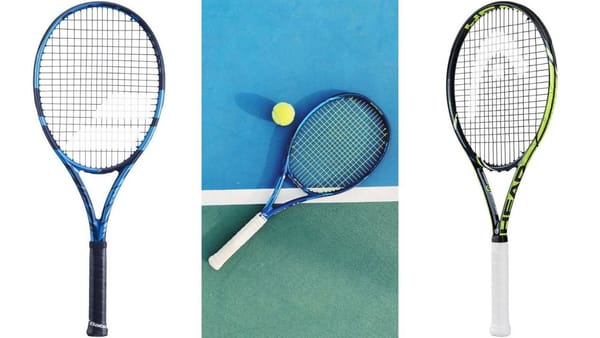Tennis is a sport with a rich history and a unique scoring system that can be confusing for beginners. Understanding how to keep score is essential for anyone interested in playing tennis, watching matches, or simply becoming a more informed fan.
This comprehensive guide will walk you through the basics of the tennis scoring system, ensuring you're well-equipped to follow the next match you attend or watch.
Key Takeaways:
- Learn the basic structure of the tennis scoring system, including points, games, sets, and matches.
- Understand the unique terms used in tennis, such as deuce, advantage, and tiebreak.
- Discover how scoring differs in various types of tennis matches, including singles, doubles, and mixed doubles.
Basics Of The Tennis Scoring System
The tennis scoring system is unique compared to many other sports. A standard game starts at 0 (called 'love') and progresses through four points to win a game.
These points are known as 15 (first point), 30 (second point), 40 (third point), and the game-winning point. However, if both players reach 40, known as deuce, the game takes a special turn.
At deuce, a player must win two consecutive points to win the game. The first of these points is called 'advantage'.
If the player with the advantage wins the next point, they win the game. If their opponent wins, the score returns to deuce. This can continue until one player wins two points in a row.
Understanding Sets and Matches
Tennis matches are divided into sets. To win a set, a player must win at least six games, with at least a two-game advantage over their opponent.
If the set reaches a 6-6 tie, a tiebreak game is played to determine the winner of the set. The first player to win seven points with a two-point lead wins the tiebreak and the set.
In most cases, men's matches are best of five sets, while women's matches are best of three. However, the final set rules can vary by tournament.
For example, Grand Slams have different rules for the final set, with some playing a tiebreak and others requiring a player to win by two games with no tiebreak.

Deuce and Advantage Explained
The deuce point is a critical moment in a tennis game. It's the point where both players have won three points, and the score is tied at 40-40. From deuce, a player must win two consecutive points to win the game.
The first of these points is called 'advantage in' (ad in) if the server wins the point, or 'advantage out' (ad out) if the receiver wins.
If the player with the advantage wins the following point, they win the game. If the opposing player scores the next point, the game returns to deuce. This can create intense and prolonged games as players battle for the two-point lead needed to secure the game.
The Role of the Server
In tennis, the player who serves has a strategic advantage. The server changes after each game, and the side of the court from which they serve changes after every point.
The first game of each set starts with the player serving from the deuce side (the right side of the court). If the game reaches deuce, the server alternates sides for each subsequent point.
The server continues to alternate serving games throughout the set. In the event of a tiebreak, the server starts by serving one point from the deuce side, and then players alternate serving two points each, starting from the ad side (the left side of the court), until the tiebreak concludes.
Tiebreaks: Breaking the Deadlock
A tiebreak game is a special game played when a set is tied at 6-6. The tiebreak is designed to break the deadlock without requiring an extended number of additional games.
Players alternate serves, with the first server starting from the deuce side for one point. After the first point, each player serves two consecutive points starting from the ad side, and this pattern continues until the tiebreak concludes.
The first player to win seven points with at least a two-point lead wins the tiebreak and the set. Tiebreaks add an extra layer of excitement and pressure, as each point becomes increasingly significant.

The Psychological Aspect of Scoring in Tennis
Have you ever wondered how the scoring system in tennis affects the players mentally? Well, it's a game of nerves as much as it is of skill. When a player is at game point, the pressure can be immense.
This is the moment where the leading player has the chance to clinch the game, and every point scored is a step closer to victory. The unique tennis scoring rules mean that a player must win by at least two points, which adds an extra layer of tension.
It's not just about hitting the ball; it's about managing the psychological battle that comes with each point wins.
In a doubles match, the dynamic changes as players play off each other's energy. The tennis court becomes a stage for teamwork and strategy. When the score is tied, the team must work in perfect harmony to win the set.
The seventh game in a set can often be a pivotal moment, with the odd game potentially swinging the momentum. Tennis players must maintain focus and composure, whether they're trying to save a game point or capitalize on one.
The sport's scoring system is designed to test not just physical prowess but mental fortitude as well.
The Influence of Scoring on Tennis Strategy
Understanding how tennis scoring works is crucial for developing a winning strategy. For instance, during a tennis match, the player or team that reaches six points with a margin of at least two points wins the set.
This point system encourages players to be aggressive and aim for game winning point opportunities. However, if the score reaches a six-all tie, a tiebreak is played, and here, every single point becomes even more critical.
Players often adjust their tactics, sometimes taking more risks to avoid the opponent gaining any advantage.
The third set in a tennis match can sometimes introduce a different scoring method, such as a final set tiebreak or a long set where players continue until one is leading by two games.
This can dramatically change the approach a player takes. For example, in a long set, conserving energy becomes key, and the focus might shift to capitalizing on the opponent's errors, like a double fault.
The tennis score is not just a number; it's a reflection of the ongoing battle of wits and endurance. The player score is a narrative of the match, and the leading player must adapt their strategy as the game evolves to maintain their edge.

Variations in Scoring Systems
While the traditional scoring system is widely used, there are variations. For example, 'no ad scoring' is a system where the game-winning point is played immediately after deuce, eliminating the need for a two-point advantage.
This format is often used in college tennis and some professional doubles matches to speed up play.
Wheelchair tennis also has some variations, including the 'two bounce rule', where the ball can bounce twice before being returned.
However, the basic scoring system remains the same, with players needing to win four points to secure a game, at least six games for a set, and the majority of sets for the match.
Singles vs. Doubles Scoring
The scoring system in singles and doubles tennis is essentially the same, with the main difference being the areas of the court used. In doubles, the alleys on each side of the court are considered in play, which is not the case in singles.
Mixed doubles matches follow the same scoring rules, with teams consisting of one male and one female player.
In doubles, the server's partner and the receiver's partner typically stand at the net to volley and cut off the ball, adding a layer of strategy and teamwork to the game. Communication and positioning are key in doubles scoring and play.
Special Cases: Championship Matches
Championship matches, especially in Grand Slams, can have unique scoring rules for the final set. Some tournaments may play a tiebreak set, while others might have an advantage set, where players must win by two games with no final set tiebreak.
These variations can lead to dramatic and lengthy final sets, as seen in some historic matches.
The choice of scoring method for the final set can significantly impact the players' strategies and the overall match dynamic. It's essential for players and fans alike to be aware of the specific rules in place for each tournament.

The Evolution of Tennis Scoring
The tennis scoring system has evolved over the years, with changes like the introduction of tiebreaks and no ad scoring. The origins of the scoring system are believed to be rooted in medieval France, with some historians suggesting that the 15, 30, and 40 scores were based on the face of a clock.
Despite its peculiarities, the tennis scoring system has stood the test of time, providing a framework for some of the most thrilling moments in sports history. Its unique blend of simplicity and complexity continues to captivate players and audiences worldwide.
Keeping Score in Practice
When playing tennis, keeping track of the score is crucial. Players often announce the score before serving, with the server's score stated first. For example, if the server has won two points and the receiver one, the server would announce "30-15".
In official matches, umpires or scorekeepers are responsible for tracking the score. However, in casual play, it's common for players to keep score themselves, requiring both honesty and attention to detail to ensure the game runs smoothly.

Some Final Thoughts
Understanding how to keep score in tennis is essential for anyone involved in the sport. The scoring system, with its unique terminology and structure, adds to the game's excitement and strategic depth.
Whether you're a player, a spectator, or just a curious learner, grasping the basics of tennis scoring will enhance your appreciation of this classic sport.
FAQ's
How many points do you need to win a tennis game? (six games)
You need to win four points to win a tennis game, but if the score reaches deuce (40-40), you must win two consecutive points to secure the game.
What is a tiebreak in tennis? (seven points)
A tiebreak is a special game played when a set is tied at 6-6. The first player to win seven points with at least a two-point lead wins the tiebreak and the set.
How is the scoring different in doubles tennis?
The scoring in doubles tennis follows the same structure as singles, but the alleys are considered in play, and there is an added emphasis on teamwork and positioning. The serving and receiving positions also rotate between partners.













Member discussion